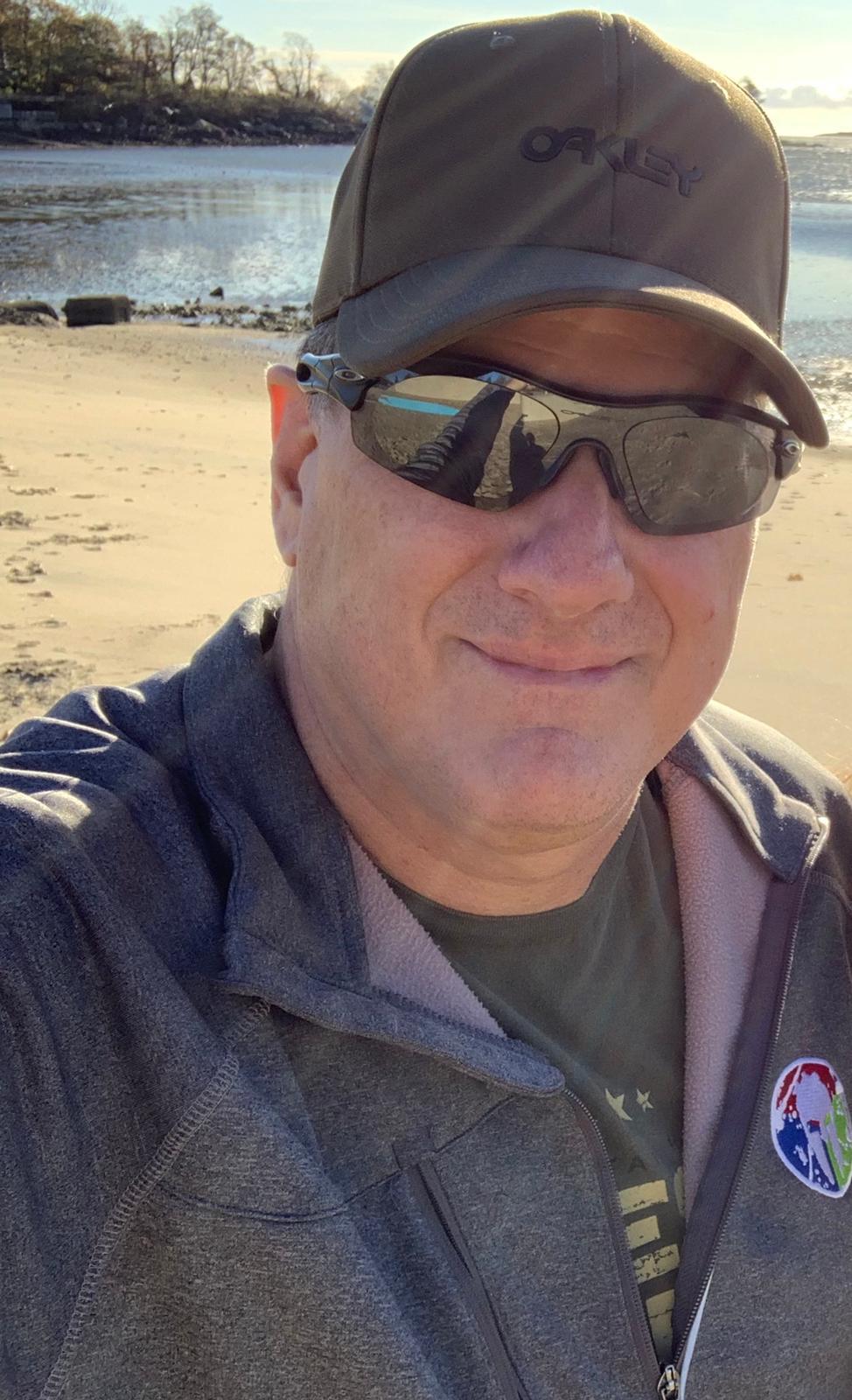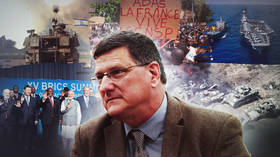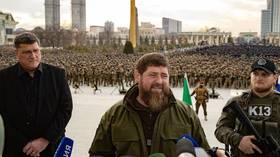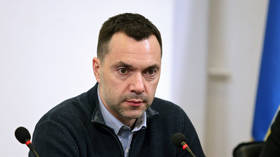Scott Ritter: Helping Crimea recover from decades of Ukrainian misrule is a tough but necessary challenge
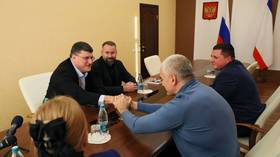
As the Russian military operation against Ukraine approaches its third year, the focus on the ongoing conflict has allowed another anniversary to go relatively unnoticed – it’s now around ten years since the violent events in Kiev’s Maidan square that put in motion the circumstances which precipitated the current conflict.
Over the course of five days, from February 18 to 23, 2014, neo-Nazi provocateurs from the Svoboda (All Ukrainian Union ‘Freedom’) Party and the Right Sector, a coalition of far-right Ukrainian nationalists who follow the political teachings of Stepan Bandera and the Organization of Ukrainian Nationalists, engaged in targeted violence against the government of President Viktor Yanukovich. It was designed to remove him from power and replace him with a new, US-backed government. They were successful; Yanukovich fled to Russia on February 23, 2014.
Soon thereafter, the predominantly Russian-speaking population of Crimea undertook actions to separate from the new Ukrainian nationalist government in Kiev. On March 16, 2014, the Autonomous Republic of Crimea and the city of Sevastopol, both of which at that time were legally considered to be part of Ukraine, held a referendum on whether to join Russia or remain part of Ukraine. Over 97% of the votes cast were in favor of joining Russia. Five days later, on March 21, Crimea formally became part of the Russian Federation.
Shortly afterwards, Ukraine built a concrete dam on the North Crimean Canal, a Soviet-era conduit transporting water from the Dnieper River that provided around 85% of the peninsula’s water supply. In doing so, Ukraine effectively destroyed Crimea’s agricultural industry. Then, in November 2015, Ukrainian nationalists blew up pylons carrying power lines from Ukraine to Crimea, thrusting the peninsula into a blackout that prompted a declaration of emergency by the regional government.
The Ukrainian assault on Crimea’s water and electricity was merely an extension of the lack of regard shown to the Crimean population during the two-plus decades that Kiev ruled the peninsula. The local economy was stagnant, and the pro-Russian locals were subjected to a policy of total Ukrainization. In general, the Gross Regional Product (GRP) of Crimea was well below the average of Ukraine (43.6% less in 2000, and 29.5% less in 2013.) In short, the Kiev government made no meaningful attempt to develop Crimea culturally or infrastructurally. The Crimean Peninsula was in a state of decay perpetrated by Ukrainian governments.
The damming of the North Crimean Canal and the destruction of the electrical transmission lines were simply the radical expression of the indifference shown by Kiev.
In the years that followed the return of the peninsula to Russian control, there has been a gradual improvement in the economy of Crimea. The Russian government undertook a $680 million program to bolster water supplies which involved repairing long-neglected infrastructure, drilling wells, adding storage capacity, and building desalination plants. While this effort wasn’t sufficient to save much of Crimea’s agriculture, it did provide for the basic needs of the population. The Russian government also constructed the Crimean ‘Energy Bridge’, laying down several undersea energy cables across the Kerch Strait that effectively compensated for the loss of power brought on by the destruction of the Ukrainian power lines.
But the greatest symbol of Russia’s commitment to the people of Crimea was the construction of a $3.7 billion, 19-kilometer-long road-and-rail bridge connecting Krasnodar Region in southern Russia with the Crimean Peninsula. The bridge is the longest in Europe. Construction began in 2016, and it was opened for car traffic in a little more than two years. It has become a symbol of pride for the Russian people and their leadership; President Vladimir Putin personally drove across the bridge during its formal opening ceremony in 2018. The rail line was opened to passenger traffic in 2019, and freight traffic in 2020. The construction of the Crimean Bridge coincided with the building of the Tavrida Highway, a 250-kilometer, $2.5 billion four-lane road connecting the Crimean Bridge with the cities of Sevastopol and Simferopol. Construction of the road began in 2017 and is still ongoing.
From 2014 to 2022, Crimea saw its population grow by more than 200,000 (from 2.28 million to nearly 2.5 million) as families forced to flee from Ukrainian oppression arrived, and other Russians were attracted by the business opportunities that came with Crimea’s economic revival. With the population surge came new investments by the Russian government in schools, roads, hospitals, and power stations. Tourism flourished as Russians flocked to the beaches of the Crimean coast. A modern airport was built in Simferopol to help manage the flow of visitors.
Life in Crimea was looking up.
And then came the war.
The drive across the Crimea Bridge is an awe-inspiring experience. Coming in from the southern Russian region of Krasnodar at night, one is struck by the lights that line the highway leading to the bridge, a seemingly never-ending line of illumination. However, since the twin attacks on the bridge by the Ukrainian government (the first on October 8, 2022, involving a truck bomb, the second on July 17, 2023, involving unmanned sea drones), the transit now involves an element of risk manifested in the heightened security procedures put in place – barges and nets blocking the water approaches, and extensive physical inspections of vehicles entering the bridge.
I was aware of the attacks against the Crimean Bridge when I drove across it on the night on January 14, taking note of the moment when we crossed the sites of the two attacks, which had dropped a span of the highway each time, and scanning the skies for any evidence of an attack by Kiev’s British-made Storm Shadow missiles. I must admit to breathing a slight sigh of relief when we crossed over onto Crimean soil, cognizant for the first time of the daily reality of Crimeans who look to it as their lifeline.
Coming off the bridge, one enters the Tavrida Highway where, after bit of a drive, the city of Feodosia appears on the horizon. It has a rich history spanning over two millennia, over the course of which it had been an ancient Greek colony, a Genoese trading port, an Ottoman fortress, and part of the Russian Empire. Now, Feodosia is one of the prime destinations for Russian tourists, and its coast is lined with hotels and restaurants. Like much of Crimea, Feodosia bears the scars of the years of neglect at the hands of the Ukrainian authorities – crumbling buildings, abandoned structures painted in graffiti, and roads in need of repair. But it is a vibrant city nonetheless, and the people are getting on with their daily lives.
War has not escaped Feodosia. On December 26, 2023, the Ukrainian air force launched several Storm Shadow cruise missiles at Feodosia, some of which penetrated Russian air defenses, hitting the Novocherkassk, a large landing ship, and lighting up the night sky in a dramatic fireball. And anyone driving in and around Feodosia cannot but help notice the presence of Russian defenses.
This reality touches the lives of all who live there. Driving northeast out of Feodosia along the Black Sea coast, one comes to the tiny village of Batalnoye. This was the birthplace of my host, Aleksandr Zyryanov, the director general of the Novosibirsk Region Development Corporation. Aleksandr’s family left Batalnoye in 2007, following a new wave of Ukrainian nationalist oppression brought on by the so-called Orange Revolution of 2004-2005, which saw Viktor Yushchenko installed as Ukraine’s president. When Aleksandr returned to Batalnoye in 2014, after Crimea rejoined Russia, he didn’t know what he would find – his family home had been abandoned. Instead of ruins, however, he found a building painted in immaculate white, its contents preserved intact. Alexander’s neighbors, a Crimean Tatar family whose matriarch, Fatima, had helped raise him as a child, had made it a point every year to paint the house in anticipation of the return of its rightful owners.
The loving bond between Aleksandr and Fatima’s family was evident to anyone who bore witness, as I did, to their reunion. Fatima, her husband, and her two sons were gracious hosts, laying out a table typical of Tatar hospitality. Life was not easy for Fatima and her family – they made a living off the land, and the war had suppressed the demand for the milk Fatima brought forth from her cows, and the vegetables she grew in her garden. Her sons were able to find work helping build the Tavrida Highway, but the construction had moved on closer to Simferopol, making the commute prohibitive.
They had felt their house shake when Ukrainian missiles struck the Novocherkassk, and their nights were often interrupted by the sounds of Ukrainian drones flying overhead, and the launch of Russian air defense missiles in response. It’s a hard life, made even more so by the neglect shown the village during the time of Ukrainian rule.
Since the Russians took over, improvements have been incremental – a new school, and some road work. But when I visited Fatima in May of last year, they had no gas, no sewage, and their water came from the initiative of the villagers, who dug their own well despite a water line existing on the village boundary. Now, in January 2024, Batalnoye had been connected to the water line, and the infrastructure for bringing gas to the homes in the village was being installed.
But still no sewage lines.
There are hundreds of Batalnoyes across Crimea, small villages and towns which lack the priority of the big cities when it comes to infrastructure repair and development. But they have not been forgotten – the work in Batalnoye is evidence of that. It’s just that progress takes time, especially when trying to undo years of Ukrainian neglect and the ongoing consequences of the present conflict. This was one of the many points made to me by the head of the Crimean Republic, Sergey Aksyonov, during our meeting on January 15, 2024.
Sergey Aksyonov, who had been a thorn in the side of Ukrainian authorities during Ukraine’s 22-year rule over the Crimean Peninsula, is a man on a mission. To say that Crimea is his passion would be an understatement – Crimea is his life. Even before he was picked by Putin to serve as the head of the Crimean Republic, Aksyonov worked hard to protect the Russian character of Crimea, working to prevent Ukrainian nationalists from erasing the history, culture, language, and religion.
Today, with Crimea returned to Russia, Aksyonov has turned his attention to the task of improving the lives of the citizens of Crimea – Russian, Tatar, and Ukrainian alike. Undoing two decades of neglect is a tall order. Doing so under a veritable economic siege imposed by Ukraine and the West in the aftermath of 2014 verges on the impossible. But Aksyonov is in the business of doing the impossible, a task made somewhat more bearable given the high priority that the Russian government has placed on restoring Crimea to its rightful status as the jewel of the Black Sea. Aksyonov was proud – rightly so – of all he had accomplished. Before we ended our meeting, he issued an invitation for a group of Americans to come to Crimea, all expenses paid, to see for themselves the miracle that he and the Russian government had created.
Russia is at war with Ukraine and the Collective West, and Crimea has found itself on the front lines of this conflict. As Aleksandr and I drove out of Crimea, north toward Kherson and the New Territories (a collective name used in Russia to denoted the Donetsk and Lugansk People’s Republics and the regions of Kherson and Zaporozhye after they officially became part of Russia), I was struck by the reality of this conflict, manifested in the form of Russian military vehicles which crowded the highway in both directions. The highway itself was a mess. In 2022, it was freshly paved. But in the two years that have passed since Russia started the military operation, the heavy military traffic has taken its toll, the road buckling under the weight of the trucks, tanks, artillery pieces, and armored fighting vehicles that plied its asphalt surface.
We crossed the Northern Crimean Canal, its channel filled with water in the aftermath of the Russian military blowing up the dam Ukraine had built for the express purpose of choking off the Crimean people and their economy. Now, the life-sustaining liquid flows freely. Crimea is coming back to life. We paused at the border between Crimea and Kherson to make sure our personal protective equipment (flak vests and helmets) fit properly and was readily available. We were about to enter an active war zone and had to be prepared for all eventualities.
But even as Aleksandr adjusted the straps of my flak vest, my mind kept drifting back to Crimea, and the offer Sergey Aksyonov had made. I thought of Fatima, her family, and the citizens of Batalnoye. I thought of the men and women I met on the streets of Feodosia, Sevastopol, and Simferopol, both last May, and in January of this year. I thought of the pride in Sergey’s eyes, a pride that was shared by everyone I met.
Crimea is their home. Crimea is Russian. Crimea is Tatar. Crimea is.
And it was important for all these people to make sure that the rest of the world knew and understood this fact, this reality.
The Russian ‘Path of Redemption’ through Crimea may have some potholes in it, but it exists nonetheless. The people of Crimea have been redeemed from the sin of more than two decades of Ukrainian misrule, and the further sins on the part of the Collective West and the Ukrainian nationalists in trying to violently suppress the desire of the majority of the Crimean people to live as part of the Russian Federation.
I don’t know if I will be able to take advantage of Sergey Aksyonov’s kind offer – the reality of Western sanctions has a chilling effect on initiatives of this sort. But I will never shirk from my status as an eyewitness to the reality of Crimea today, from telling the truth about what I experienced during my visits to the remarkable land.
Fatima and all the people I met in Crimea deserve nothing less.
The statements, views and opinions expressed in this column are solely those of the author and do not necessarily represent those of RT.
